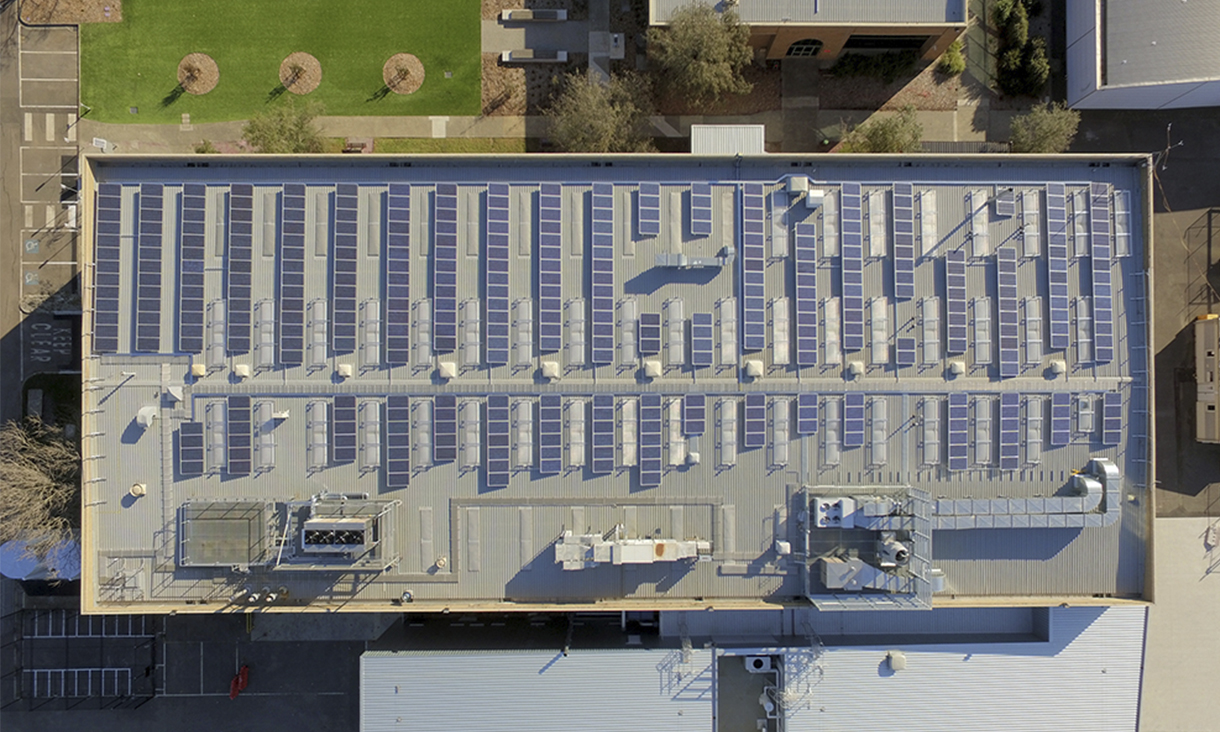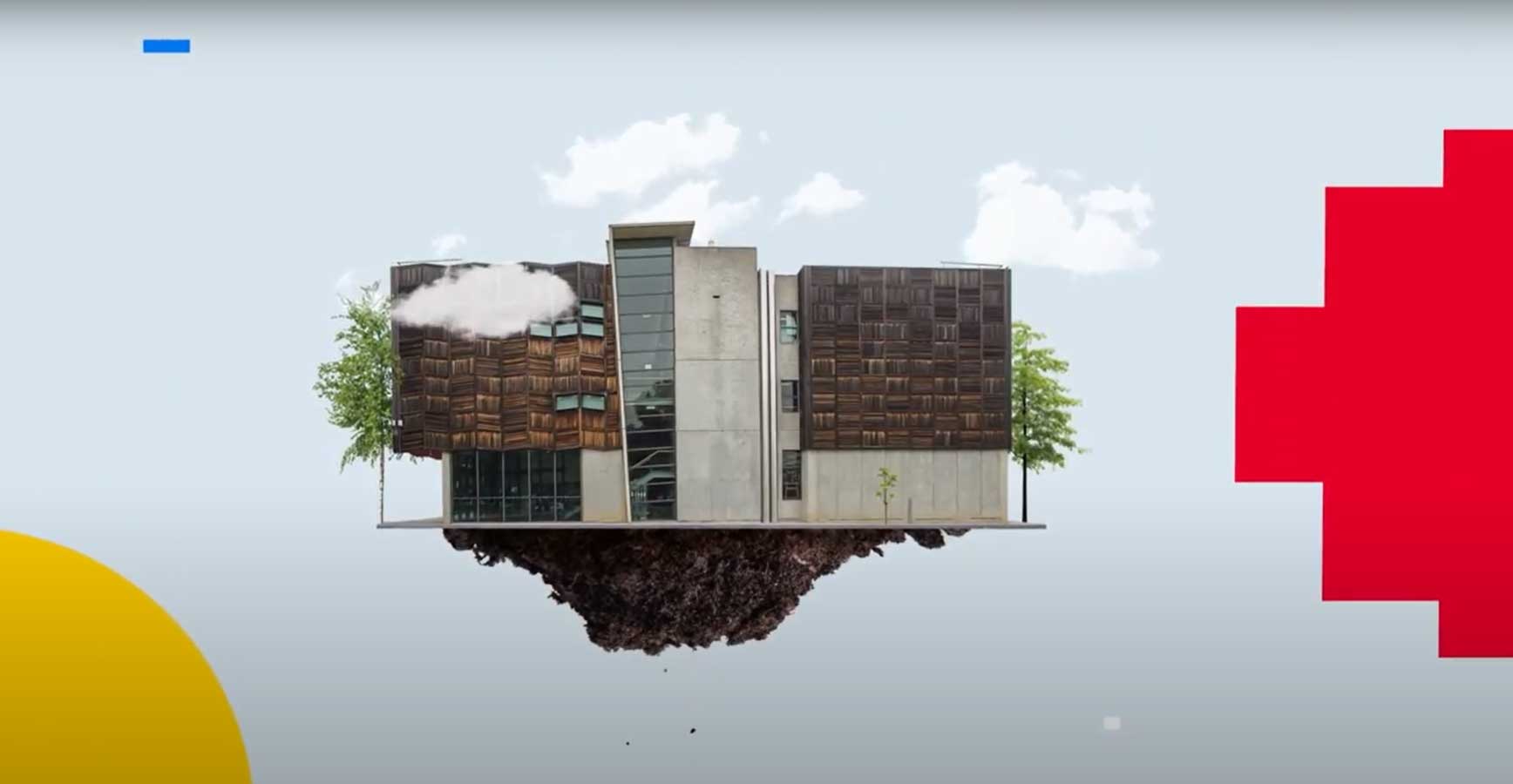Sustainable Urban Precincts Program


To realise this vision, RMIT committed to a $128 million plan to reduce energy and water use, significantly lowering greenhouse gas emissions associated with campus operations. The Sustainable Urban Precincts Program (SUPP) is the largest program of its kind in the southern hemisphere. The results have been amazing!
RMIT partnered with Siemens and Honeywell to identify opportunities for energy and water savings and implement solutions to capture these savings in 77 buildings in the City, Bundoora and Brunswick campuses.
Since competition of the project, RMIT has been realising the savings that flow from this significant investment.
SUPP halved RMIT’s requirements for grid electricity, leading to a 30,000-tonne annual reduction in greenhouse gas emissions. But it wasn’t all about emissions, water use was reduced by approximately 53 million litres through water efficiency and water harvesting solutions. The project also considered the existing lifecycle conditions of the University’s equipment, the investments through SUPP resulted in significant operational improvements that have benefited the entire RMIT community.
SUPP was a “once in a generation” project which provided RMIT with a fundamental shift in momentum towards achieving the 2025 carbon neutral target

Sustainable Urban Precincts Program (SUPP) | RMIT University
(Transcript with notations)
Typist's notes: Female voice as the narrator. This video is in cartoon computer graphic format
VISUAL: RMIT University logo.
VISUAL: RMIT University logo is in the centre of the screen. In the background gradually there appears green mountains, blue sky with white fluffy clouds, six wind turbines, 11 trees (pine and gum) and a blue river flows from the back of the screen from the top of the mountain to the front.
Narrator: In case you haven't noticed RMIT is going green.
VISUAL: The earth in starry space with Australia at the front of the globe. The title at the bottom of the screen reads Sustainable Urban Precincts Program. On the top right of the screen is a satellite. The acronym of SUPP appears across Australia on the globe. At the end the globe moves very close to the camera focusing on Australia and Melbourne.
Narrator: Our Sustainable Urban Precincts Program or SUPP is the largest project of its kind in the southern hemisphere.
VISUAL: Drawn map of Melbourne and surrounding suburbs and the bay. Seven RMIT buildings are drawn at labelled locations: Melbourne, Brunswick and Bundoora with the RMIT University logo. There are a few trees drawn in as well. At the top of the screen is a heading which reads: 90 buildings, 3 campuses. Beside this heading appears three symbols: an electric power plug representing energy, a water drop representing water use, and a leaf for greenhouse gas emissions. Above each of these symbols is a horizontal bar which lowers the capacity in the bar as the narrator speaks.
Narrator: We're upgrading 90 buildings across three campuses to slash energy and water use and reduce our greenhouse gas emissions.
VISUAL: Six globes on electrical wires hang and swing from the top of the screen. A title in the centre of the screen reads: 26,000 light fittings.
Narrator: We're changing 26,000 light fittings ...
VISUAL: Same title as before ie 26,000 light fittings, but the six hanging light globes change to seven energy efficient light globes.
Narrator: ... with the aim of reducing our energy consumption by ...
VISUAL: A circle in the centre of the screen with the number 239 inside it. The centre of the circle is coloured red ie 360 degrees but gradually decreases in a clockwise direction (as if following an individual clock hand), until there is no more red remaining, just a grey background. The words: Million kWh appear under the 239 circle.
Narrator: ... 239 million kilowatt hours over eight years.
VISUAL: The circle changes into the back wheel of a bicycle as the camera pans back to show a stick figure riding the bike. Then camera moves further back to show at least 20 other stick figures riding bicycles behind the first rider. They are riding on a road running horizontal across the screen with grass and trees on either side of the road. In the top section of the screen appears a title 54 hours.
Narrator: That amount of electricity would take Australia's entire population?...
VISUAL: Same image as previous but now in the top section of the screen appears a title: 54 hours.
Narrator: ... 54 hours of non-stop cycling to generate ...
VISUAL: Same image as before but now a train appears in the foreground running right to left across the screen and covers the title of 54 hours. The stick figures riding the bikes are still in the background moving left to right across the screen. As the narrator says seven months the title appears at the top of the screen above the train: 7 months.
Narrator: ... or could power Melbourne's central train network for seven months.
VISUAL: Looking through train windows at rows and rows of the same shape houses with two windows which are lit in each house. The background sky is the colour of twilight and Melbourne city buildings can be seen on the horizon. The following title appears between the first row of houses: 7,000 homes. Then another title appears in front of the fourth row of houses: 6 years.
Narrator: It's enough to power 7,000 homes for six years.
VISUAL: Same image as before but night changes into day. The lights in the houses are all turned off. A couple of red hot air balloons are next to and just above the city buildings in the distance.
Narrator: And means a ...
VISUAL: Camera focuses on the now five red hot air balloons with RMIT University logo on them with a blue sky in the background. The title 30,000 tonnes CO2 appears and floats to the centre of the screen.
Narrator: ... 30,000 tonne drop in CO2 annually ...
VISUAL: Map of Melbourne and surrounding suburbs and the bay. Lots of tall city buildings are located where Melbourne city is and a label of Melbourne appears just above the city buildings.
Narrator: ... equivalent to planting Melbourne's CBD ...
VISUAL: Same image as previous however the buildings are replaced with lots of trees and the label of 128,000 trees appears above the trees.
Narrator: ... with 128,000 trees every year.
VISUAL: Same image as previous but now water drops begin to fall from the top of the screen and build up to gradually fill the entire screen with water.
Narrator: We're replacing ...
VISUAL: Blue screen of water drops from full screen down to the lower quarter of the screen only and a dripping tap appears at the right side of the screen. On the left of the screen is a title: 2,000 fixtures.
Narrator: ... 2,000 fixtures ...
VISUAL: Same background as before of water in lower quarter of screen but the tap head changes to a water saving tap head. The title at the left of the screen now reads: 68 million litres.
Narrator: ... to save 68 million litres of water a year ...
VISUAL: A teacup filled with coffee appears in the centre of the screen and a title appears above the cup: 425 million.
Narrator: ... enough to make 425 million cups of coffee ...
VISUAL: Map of Australia with all the eastern states covered in tiny images of the coffee cup.
Narrator: ... half of Australia's annual consumption.
VISUAL: A red door with RMIT University logo at the top of the door opens and the camera proceeds into the darkness beyond.
Narrator: And we've committed ...
VISUAL: The darkness is transformed into an image of an auditorium with three rows of chairs, a lectern in the centre of the stage in the spotlight and an overhead screen at the back of the stage. On the overhead screen appears the words: $4.8 million sustainable teaching & research.
Narrator: ... $4.8 million in sustainable teaching and research ...
VISUAL: Same image as previous, however, the words on the overhead screen are changed and appear in sync with the narration: five learning & teaching projects; six inter-disciplinary research projects; 10 PhD scholarships.
Narrator: ... funding five learning and teaching projects, six inter-disciplinary research projects, and 10 PhD scholarships to embed sustainability across RMIT activities.
VISUAL: Same image from the beginning of the video ie blue sky and white fluffy clouds with green mountains with four wind turbines and 11 trees with a river running through the scene. At the centre of the screen in the foreground is the acronym: SUPP.
Narrator: SUPP is a once-in a generation opportunity for ...
VISUAL: Same image as previous, however, the title SUPP in the centre of the screen is changed to RMIT University logo.
Narrator: ... RMIT to achieve ...
VISUAL: Same image as previous but it is gradually faded away in sections ie trees removed, then the river, wind turbines. The mountains flatten out and the green of the grass moves down and off the screen. The sky fades away to white. The RMIT University logo increasing in size gradually as the background is fading away.
Narrator: ... a fundamental shift towards sustainability.
VISUAL: RMIT University logo in the centre of the screen with a white background.
End of video
SUPP was born out of an initial RMIT commitment made in 2007 to reduce greenhouse gas emissions on campus by 25% by 2020. Due to this bold infrastructure project, RMIT achieved this target four years ahead of schedule.
SUPP was delivered under an Energy Performance Contract (EPC) model ensuring that the energy savings associated with the investment were guaranteed by our global partners to ensure that RMIT will achieve the committed emissions reduction target.
SUPP Infrastructure upgrades were leveraged to create world-leading, innovative, future-proof, collaborative projects which have embedded sustainability across the core business of the University and delivered strategic outcomes for schools and research areas.
SUPP devlivered 4.5MW of installed embedded generation (solar PV and co/tri-generation) to our campuses. The embedded generation alongside the rest of the energy efficiency initiatives reduced the University's reliance on grid electricity by over 50%.
The total emissions savings under SUPP (once the additional natural gas that is required to generate our own electricity onsite is factored in) is over 30,000 tonnes, which represents around a 40% reduction to our original emissions profile.
To create a legacy of learning beyond the life of the project, SUPP incorporated a $4.8M investment into Learning, Teaching, Research and student engagement. SUPP has allowed RMIT to accelerate skills development, enhance research capabilities and develop career pathways for students into related industries. Students and researchers have leveraged the project to develop new sustainability initiatives and case studies.
The works were implemented across 77 buildings and included;
All works were completed under live operational conditions with minimal impact to the University core business. This is a feat that should not be understated considering that the program was delivered across a building portfolio that spans three centuries and includes some of the oldest buildings in Melbourne.
View the flyer for more information


RMIT University acknowledges the people of the Woi wurrung and Boon wurrung language groups of the eastern Kulin Nation on whose unceded lands we conduct the business of the University. RMIT University respectfully acknowledges their Ancestors and Elders, past and present. RMIT also acknowledges the Traditional Custodians and their Ancestors of the lands and waters across Australia where we conduct our business - Artwork 'Sentient' by Hollie Johnson, Gunaikurnai and Monero Ngarigo.
Learn more about our commitment to Indigenous cultures